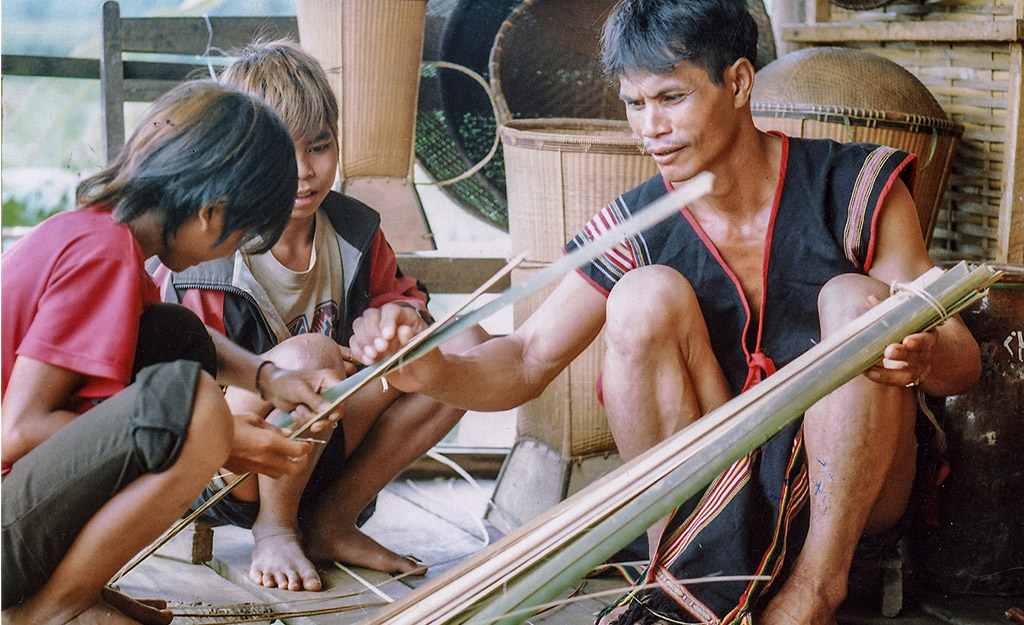Sabira Soltongeldieva
Culture Programme Specialist, National Commission of the Kyrgyz Republic for UNESCO
Country Background
Kyrgyzstan, officially called the Kyrgyz Republic, is a small mountainous country in Central Asia with a population of around six million people. The Kyrgyz Republic shares borders with Kazakhstan, Uzbekistan, Tajikistan, and China. The Kyrgyz Republic gained its independence in 1991 after the downfall of the Soviet Union. About 80 percent of the populations are ethnic Kyrgyz. The other 20 percent consists of ethnic Russians, Uzbeks, Ukrainians, Tatars, Tajiks, Kazakhs, Dungans, Koreans, and other groups. The Kyrgyz people overwhelmingly consider themselves Muslim. The Kyrgyz Republic ratified the Convention for the Safeguarding of the Intangible Cultural Heritage in 2006 and became one of the first Central Asian State Parties to the Convention. Also, the Kyrgyz Republic will continue to be a member of the Intergovernmental Committee until 2016.
Intangible Cultural Heritage in the Kyrgyz Republic
The Kyrgyz Republic has a rich intangible cultural heritage that is rooted in the history of the Kyrgyz people who had nomadic way of life for many centuries. Kyrgyz culture has always been based on a traditional knowledge system that reflects the centuries-old folk wisdom. Intangible cultural heritage of the Kyrgyz people is vividly expressed in such fields as oral folklore, folk performance arts, festive rituals, techniques and technologies related to traditional craftsmanship, musical instruments, clothing, cuisine, traditional games, and, traditional knowledge systems.
The Kyrgyz Republic has adopted a number of important laws to strengthen the legislative framework in the field of intangible cultural heritage: On the Protection of Traditional Knowledge (2007), On the Epic Heritage (2011), and On the Intangible Cultural Heritage of the Kyrgyz Republic (2012).
The national body responsible for intangible cultural heritage safeguarding is the National Committee for the Intangible Cultural Heritage, under the Ministry of Culture and Tourism of the Kyrgyz Republic. Other state bodies responsible for safeguarding the intangible cultural heritage are the Institute of Languages and Literature and the Institute of History and Cultural Heritage of the Kyrgyz National Academy of Sciences, and various NGOs and associations of ICH practitioners, which implement an array of activities aimed at safeguarding and promoting the intangible heritage.
The Inventorying Process of Intangible Cultural Heritage
Originally, inventorying the intangible cultural heritage on the current territory of Kyrgyzstan started in the 1950s. It was initiated by the scientists and ethnographers of the Academy of Sciences of the Kyrgyz Soviet Republic with the support of the USSR Academy of Sciences. A significant amount of work on recording the oral folklore and instrumental creations was carried out back then. There have been collected fragments of epic heritage and elements of traditional games. All the gathered documentations were stored and preserved at the Academy of Sciences of the Kyrgyz Soviet Republic. However, there was a considerable disadvantage of the inventory activities—that is, all the materials were edited and became subject to deliberate falsification, misrepresentation, and unification in order to meet the principles of soviet ideology. The inventory was carried out without the appropriate participation of bearers and practitioners of traditional knowledge.
In the present time, a process of identifying and inventorying intangible cultural heritage elements started in 2007. It is being implemented under the aegis of the Ministry of Culture and Tourism of the Kyrgyz Republic and the Kyrgyz National Academy of Sciences with participation of ICH practitioners, non-governmental organizations, and intangible cultural heritage experts. The objective of this process is to reveal and identify the intangible cultural heritage elements and inscribe them in the intangible cultural heritage National Inventory for safeguarding measures. As a result of this work, the national inventory was formed in 2008 and was updated in 2011 and 2012. At present, it includes 114 elements from 7 domains: oral traditions and expressions, performing arts, festive and ritual culture, techniques and technologies, national games, traditional knowledge, and ornaments.
NGOs working in the field of ICH and acting on the territory of the Kyrgyz Republic achieved great success in inventorying ICH elements. As a result of their activities, the databases on traditional handicraft techniques, traditional healing, epic heritage, and traditional knowledge and manifestations of pre-Islamic religious beliefs related thereto were formed. All the work was carried out with the direct participation of bearers and practitioners. The above-mentioned collected data is available on each non-governmental organization’s website and was also submitted to the Centre for Documentation of Tangible and Intangible Cultural Heritage. The Non-governmental organizations have a well-developed countrywide network; they have onsite curators following the situation in the regions and informing the head offices about the processes of identifying and defining the intangible cultural heritage elements.
One of the successful examples of research and documentation is presented by the Aigine Cultural Research Centre, which has been making an inventory of sacred sites throughout the country. Since 2005, Aigine CRC has been conducting a study on sacred sites in all the provinces of Kyrgyzstan. The study includes identifying, documenting, and inventorying sacred sites throughout the country. Students of local universities, village intellectuals, and practitioners have been involved in field research in each province. Findings of the study made it possible for Aigine to define an outline of the Sacred Geography of Kyrgyzstan. It contains an inventory of 920 sacred sites, which includes locations and descriptions with pictures of the places, recognized by local people as sacred or holy. Besides the inventory, the study investigated intangible cultural elements such as the historical and contemporary dimensions of sacred sites as well as beliefs, rituals, and traditional practices.
To learn more about the Aigine CRC’s activities please visit the center’s website (traditionalknowledge.org) or see some of our videos on YouTube (youtube.com/user/AigineCRC/videos).







